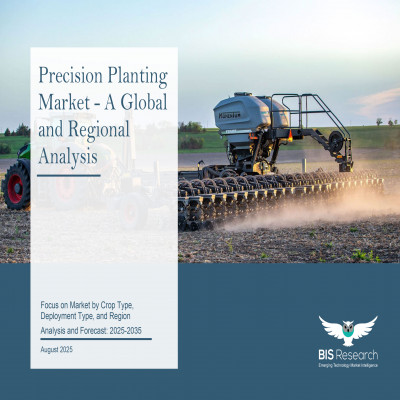Introduction to Asia-Pacific Precision Planting Market
The Asia-Pacific precision planting market’s revenue was $227.1 million in 2024, and it is expected to reach $741.5 million by 2035, advancing at a CAGR of 11.28% during the forecast period (2025-2035). The precision planting industry is gradually growing throughout Asia Pacific due to the growing demand for sustainable food production and rising seed prices that encourage efficiency. It is now crucial to increase agricultural productivity without adding more farmland because the region's population is predicted to increase dramatically and food demand is likely to rise by 2050.
Farmers in a variety of APAC terrains can improve crop yields and germination rates by optimizing seed depth and spacing with the aid of precision and multi-hybrid planters. Precision planting supports climate-smart agriculture and resource efficiency, which is in line with regional sustainability initiatives like climate-resilient farming programs in nations like China, India, and Southeast Asia.
However, several challenges restrict widespread adoption:
• High implementation costs: Small and medium-sized farms often struggle to invest in advanced equipment.
• Technological complexity: The sophistication of precision planting solutions can deter adoption.
• Limited digital infrastructure: Some rural areas lack the connectivity required for smart farming technologies.
• Awareness gaps: Many farmers remain unfamiliar with the benefits of precision planting, hindering penetration.
Once these barriers are addressed through government incentives, subsidies, training programs, and regional agricultural policies, precision planting is expected to become a cornerstone of APAC’s sustainable agriculture landscape.
Market Introduction
The Asia-Pacific (APAC) Precision Planting Market is expanding rapidly, driven by the region's growing population, rising food consumption, and the need for increased agricultural production on limited farmland. Since APAC is home to some of the biggest agricultural economies in the world, such as China, India, Japan, and Australia, the use of cutting-edge planting technologies is accelerating in order to tackle issues of manpower shortages, resource scarcity, and climate variability.
Precision planting solutions such as GPS-guided equipment, variable rate technology (VRT), and automated seeding systems are helping farmers improve seed placement accuracy, optimize input usage, and enhance overall yields. China, in particular, is taking the lead through large-scale government initiatives, subsidies, and digitization programs to modernize agriculture and promote climate-smart farming. Similar to this, India is using precision planting with the help of agritech companies and government-sponsored programs to address water scarcity, fragmented landholdings, and the need to increase agricultural yield.
Barriers include high implementation costs, low farmer awareness, and poor infrastructure in rural areas continue to be major obstacles despite the promising growth potential. Adoption is being accelerated, meanwhile, by growing agri-tech investment, encouraging governmental regulations, and regional partnerships. Precision planting is expected to be a key component of the farming revolution in APAC as the region works toward its sustainable agriculture objectives.
Market Segmentation
Segmentation 1: by Crop Type
• Cereals and Grains
• Oilseeds and Pulses
• Fruits and Vegetables
• Others
Segmentation 2: by Deployment Type
• Precision Planters
• Planting Retrofit Kits
• Autonomous Planting Systems
• Drone-Based Seeding Systems
Segmentation 3: by Region
• Asia-Pacific
APAC Precision Planting Market Trends, Drivers and Challenges
Market Trends
• Gradual expansion across countries like India, China, and Southeast Asia due to rising focus on sustainable agriculture.
• Increasing adoption of multi-hybrid and precision planters to optimize seed placement and depth.
• Alignment with regional climate-smart and resource-efficient farming initiatives.
• Growing integration of digital farming technologies where infrastructure permits.
Market Drivers
• Rising demand for food production driven by population growth in APAC.
• Seed price increases encouraging efficient use of inputs.
• Need to enhance yield without expanding farmland due to land limitations.
• Government and regional sustainability programs promoting precision agriculture practices.
• Technological benefits: improved germination, uniform crop growth, and higher yields.
Market Challenges
• High implementation costs, especially for small and medium-sized farms.
• Complexity of technology, making adoption difficult for farmers with limited technical knowledge.
• Limited digital infrastructure in rural and remote areas.
• Awareness gaps among farmers about the benefits of precision planting.
• Training and skill shortages to operate and maintain advanced planters.

